#uzbek music
Text

Uzbek Soviet Artist: Турғун Алиматов
Album: 1976
#world music#lp covers#central asian#uzbek#album art#music#ussr#soviet#soviet music#uzbek music#uzbek artists
57 notes
·
View notes
Text
Torn by Natalie Imbruglia is a complete rip off of the 1996 Uzbek hit Sog’indim Ishon by Tohir Sodiqov and I will die on this hill.
#music#Central Asia#uzbekistan#uzbek#natalie imbruglia#pop music#1990s music#2000s music#pop hits#90s music#musician#torn#central asian
13 notes
·
View notes
Text
having had a dedicated playlist from my sri lanka trip in may means spotify thinks my habits match listeners from tashkent, uzbekistan
2 notes
·
View notes
Note
do you think they have any shared interest or hobbies :0
they definitely bake! uzbekistan was nomadic for a while before settling down, so the food she has is definitely tasty, but for survival. making something sweet would have been a luxury these nomadic tribes didn't feel the need to have, hence her small array of desserts.
turkey however was given a lot of time to sit down and crave something sweet. not just that, he was surrounded by cultures that had something to bring to the table, which is how you get food like baklava, lokum, kunefe, and others.
so you have someone who doesn't know how to bake, and someone who has years of experience. he'd definitely teach her how to bake sweet treats!
in turn, she teaches him how to make her food: dimlama, somsa, and of course, osh/plov! heavy emphasis on the last one, this one time turkish food creators were trying to cook osh, they did it in a frypan... WHERES YOUR WOK !!
but its ok because when uzbekistan teaches turkey to make uzbek pahlava, he almost cries inside. raisins?? a meringue layer?? what??
they both also watch turkish dramas. though it's funny because when they watch it at her house, some parts sadik was absolutely sure were in the episode are just gone.
🇺🇿: see we had to get rid of the not halal parts of the episode
🇹🇷: so you got rid of like. half the episode???
🇺🇿: i got jumpscared by a guy and a girl eating their faces off once it's not happening again
so anyways the marketing team for mendirman jaloliddin definitely called them over and took promotional pics with them.
they also probably watch those russian true crime dramas about cases from the ussr(rip uzb is a true crime girly)
dancing! when turkey goes to uzbek weddings with her, she(and the local grandmas) teach him how to dance. she falls on the floor in stitches every time. halay is easier for her to get used to, until the music randomly speeds up and slows down.
unrelated but... in my mind...miss nargiza is so so good at lazgi. this is my sign to draw her in a lazgi fit. it's how she trains herself to smile at world meetings, since you need to keep a smile on the whole time. watching her dance is...kinda uncanny...
museums, sometimes? uzbekistan loves going to art and history museums, she likes looking at the legacy her people have left behind! she brings turkey along as well. depending on what kind of museum, he'd be down for it or he'll pass
🇹🇷: but i've already seen you in those outfits like 3 centuries agooooo
🇺🇿: ok but have you seen these tapestries?? never probably
music. rubob-baglama duo when
reading! i like to think sometimes they'll chill and read
oh omg clothes shopping too. again I can see turkey flip flopping around: sometimes he likes it sometimes he hates it but I imagine they spend time picking out each others' outfits <3
#hetalia#aph uzbekistan#hws uzbekistan#aph turkey#hws turkey#nargiza yusufqizi#sadik adnan#turkuzbek#tokki writes#tokki answers
7 notes
·
View notes
Text
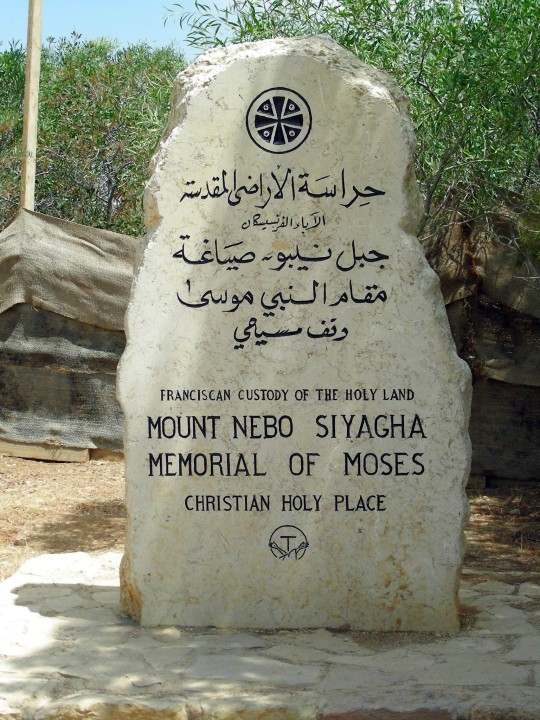




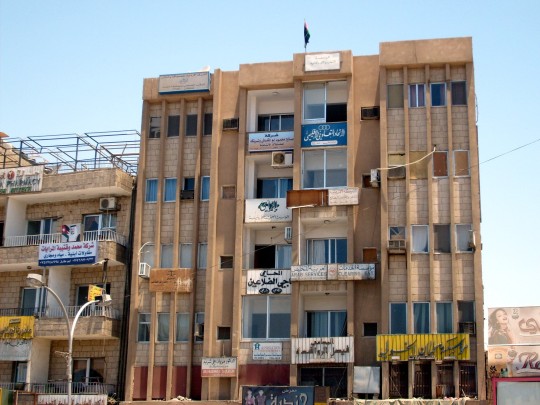
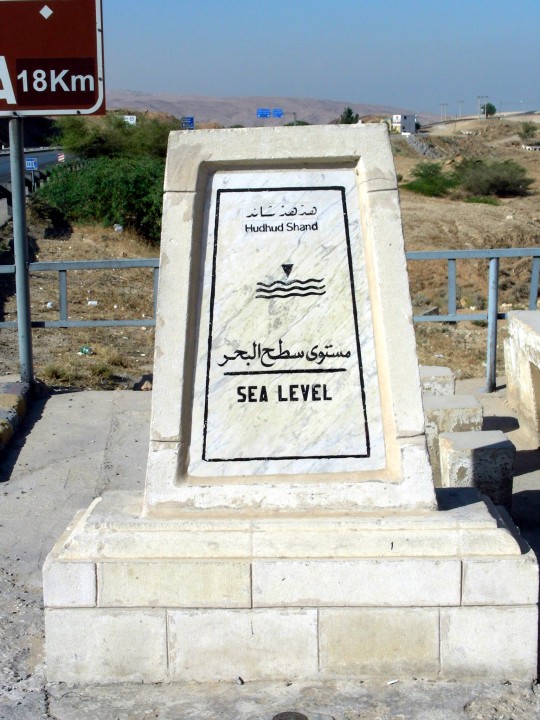



World Arabic Language Day
With an estimated 390 million speakers, Arabic is one of the most widely spoken languages in the world. It is also one of the six official languages of the United Nations, as well as the liturgical language of 1.6 billion Muslims. Being one of the only modern languages to be written and read in a right-to-left form, Arabic is a fascinating language with a long history. For all of these reasons and many more, we can all agree that Arabic is more than deserving of its very own day.
History of World Arabic Language Day
Although the Arabic language is the language of Islam, it dates back over one hundred years further than the religion. The earliest Arabic inscriptions were created in the early 6th century AD. Arabic was originally based mainly on the Aramaic alphabet that was then modified and adapted over many years to finally become its very own, distinct lanuguage. In 632, the year that Muslims believe the Quran was revealed to Muhammed, Muhammed’s language became the language of his new religion. The holy book of Islam, the Quran, was written in Classical Arabic and it is still used in religious ceremonies and sermons till this day.
By the 8thcentury, many poems and other works had been written in Arabic as well. Arabic has had an enormous influence on people all over the world, as the majority of countires in the world today officially use the Arabic numerical system. Furthermore, because of the countless wars waged in the Middle Ages especially, the Arabic language is an important source of vocabulary for many European languages, such as Portuguese, Spanish, English, French and Sicilian, as well as non-European languages such as Swahili and Uzbek. Many of the words that English-speakers use regularly come from Arabic, including cotton, coffee and guitar.
World Arabic Language Day was established in 2010 by UNESCO to promote cultural understanding and to highlight Arabic as one of the most important languages in the world. Today, there are three different types of Arabic: Classical; Modern Standard Arabic, the last of which is used in publishing, education and the media across the Arab world. Colloquial Arabic, an everyday dialect, is also used in different regions and has numerous variations. Due to its elegant, flowing lines, thousands of people the world over have also chose to get tattoos in Arabic, singer Christina Perri and actors Colin Farrell and Zoe Saldana, to name but a few.
How to celebrate World Arabic Language Day
The best way to celebrate this day would be to increase your knowledge of this language. Many people living in parts of North America or Europe may not even really know how it sounds. Of course, it is nearly impossible to learn to read even small fragments of this complex language during the course of just one day, but that shouldn’t stop you from discovering it. The Arabic language is especially beautiful when sung.
If you like opera, you could check out one of Sarah Brightman’s most acclaimed albums titled, “Harem”. The songs on it are a truly original mix of Arabian pop and opera, and are sung in several different languages, including Arabic. Listening to this album will not only allow you to become acquainted with what the language sounds like, but also introduce you to various instruments and sounds typical for Middle Eastern music that you may well fall in love with.
Source
#Amman#Aqaba#Mount Nebo#Dead Sea#summer 2007#Jordan#Asia#Middle East#mosque#architecture#original photography#travel#vacation#landscape#countryside#cityscape#World Arabic Language Day#18 December#Fort Aqaba#tourist attraction#landmark#WorldArabicLanguageDay#desert#street scene#museum#outdoors#indoors
4 notes
·
View notes
Note
For the Unwritten Fic ask game: 4 & 12
Sorry this took so long, I really needed to ponder these questions. But now I think I have something sufficient to answer them.

For this ask game, I'm referring to the unwritten Tadeusz Melnik fic, Covert Affairs
---
4. Is there anything in the fic you're unsure about including?

The biggest thing that I'm still unsure about is including his full canon backstory.
In A Very Polish Practice, he is well-educated and has a Doctorate in Philosophy but instead of pursuing academia, he went into more illegal business affairs which included working with "the Communists" as he put it. He was married at one time, but cheated on his wife with the wife of the main character of the movie when she was much younger. (That's a very, very simplified version of his backstory but you get the gist). At the end of the movie, he moves to Switzerland as he is on the run from the Polish authorities because someone ratted him out or something.
So with all that being said, I think I might tweak his backstory a bit.
In Covert Affairs, he moved to New Jersey since he was almost caught in Switzerland and is now working with the underground mob there. But you would also learn that the wife of the main character from the movie ran off with him instead of how it really ended. And she was killed during the sting that led him to move to New Jersey. (The person that ratted him out would be one of the Communists that he used to work with and would be the main antagonist of the fic.)
--
12. How far have you planned ahead?
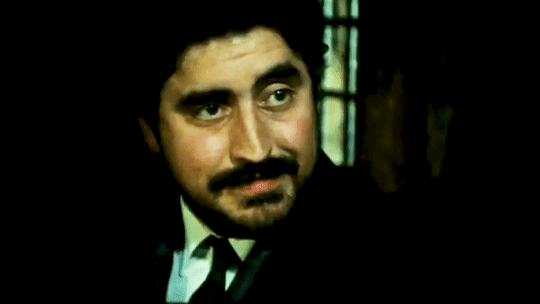
I've planned out the premise and background of this story since I sat down and watched A Very Polish Practice for the second time. Although, I did know that I wanted to write a Tadeusz fic before then.
Personally, I think his character could be explored a lot more like Silas or Terry. I don't think they did enough with his character so I want to do that for them. 😉
I was actually told by one of my mutuals @sgt-petter that his last name sounds Belarusian or Ukrainian, so I might do like I did with Sergei (half Uzbek/half Russian) and make him half Polish/half Belarusian, which would be kinda cute since Kazia Jefferson, his love interest, is also half Polish (and half black).
And I think his Belarusian background would also lead him to be able to easily work with the Communists since he would know their culture and language from his father.
•••
As for Kazia, she's really into 80s fashion and music especially R&B and Soul. And I imagine her looking like Karyn White or Jody Watley back in the day. (The story takes place in 1995.)

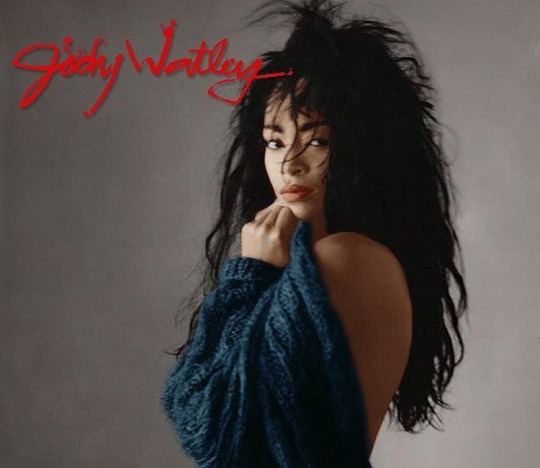
I even made a Spotify Playlist of songs that Kazia would be listening to on her Walkman on her way to her shift at the Starlight Diner where she works and ends up meeting Tadeusz.
So yeah, I've been planning this fic out. I hope to start working on writing it this month. 🤞🏾
#i think yall gonna like this story#once i finally get around to writing it#i apologize#i'm just all over the place#tadeusz melnik#a very polish practice#fanfiction#fanfiction ideas#thanks for the ask!#ask game#asks#alfred molina
17 notes
·
View notes
Text
My Love for Central Asian Literature Part 1 – Abdurauf Fitrat, Abdulla Qodiry, and Cho’lpon
I’m currently working on a script for my history podcast, the Art of Asymmetrical Warfare, about three Central Asian literary giants: Abdurauf Fitrat, Abdulla Qodiry, and Abdulhamid Sulayman o’g’li Yusunov also known as Cho’lpon and it got me thinking about their influence on my historical interests, reading tastes, and writing style.
If you’re wondering why a podcast about asymmetrical warfare is talking about three Central Asian writers, you should check out my upcoming podcast episode. 😉
How I Became Interested in Central Asian Literature
My interest in Central Asia has been a long time percolating and it was just waiting for the right combination of sparks to turn it into a hyperfixation (sort of like my interest in the IRA). I went to the Virginia Military Institute for undergrad and majored in International Relations with a minor in National Security and my focus was on terrorism. So, I knew a lot about Afghanistan and Pakistan and the “classic” “terrorists” like the IRA, the FLN, Hamas, etc. and I knew of the five Central Asian states (one of my professors was banned for life from either Turkmenistan or Tajikistan and sort of life goals, but also please don’t ban me haha), but my brain bookmarked it, and I went on my merry way.
Then I went to University of Chicago for my masters, and I took my favorite class: Crime, the State, and Terrorism which focused on moments when crime, government, and terrorism intersect. This brought me back to Pakistan and Afghanistan, but this time focusing on the drug trade which led me to Uzbekistan and Tajikistan and their ties to the Taliban and it was sort of like an awakening. I suddenly had five post-Soviet states (if you know me, you’ll know I’m fascinated by post-Soviet states) with connections to the drug trade (another interest of mine) and influenced by Persian and Turkic identities. I was also writing a scifi series at the time that included a team of Russian, Eastern European, and Central Asian scientists and officers, so the interest came at the right time to hook my brain. Actually, if you buy my friend’s EzraArndtWrites upcoming “My Say in the Matter” anthology, you’ll read a short story featuring Ruslan, my bisexual, Sunni Muslim, Uzbek doctor who was inspired by my sudden interest in Central Asia.
Hamid Ismailov’s the Devils’ Dance
I wanted to know more beyond the drug trade and usually when I try to learn about a place whether it be Poland, Ireland, or Uzbekistan, I go to their music and literature. This led me to one of my all-time favorite writers Hamid Ismailov and my favorite publishers Tilted Axis Press.
Tilted Axis Press is a British publisher who specializes in publishing works by mainly Asian, although not only Asian writers, translated into English. They publish about six books a year and you can purchase their yearly bundle which guarantees you’ll get all six books plus whatever else they publish throughout the year. I’ve purchased the bundle two years in a row, and I haven’t regretted it. The literature and writers you’re introduced to are amazing and you probably won’t normally have found unless you were looking specifically for these types of books.
Hamid Ismailov is an Uzbek writer who was banished from Uzbekistan for “overly democratic tendencies”. He wrote for BBC for years and published several books in Russian and Uzbek. A good number of his books have been translated into English and can be found either through Tilted Axis or any other bookstore/bookseller. Some of my favorites include Dead Lake, the Manaschi, the Underground, and the book that inspired everything the Devils’ Dance.
Tilted Axis’ translation of The Devils’ Dance came out the same year I was working on my masters, and I bought it because it is a fictional account of Abdulla Qodiriy’s last days while in a Soviet prison. He goes through several interrogations and runs into his fellow writers and friends: Fitrat and Cho’lpon. Qodiriy is written as detached from events while Cho’lpon comes across as very sarcastic, as if this is all a game, and Fitrat is interestingly resigned to the Soviet’s games but seems to have some fight in him. Qodiry distracts himself from the horrors around him by thinking about his unwritten novel (which he really was working on when he was arrested by the NVKD). His novel focuses on Oyxon, a young woman forced to marry three khans during the Great Game. His daydreaming takes a power of its own and he occasionally slips back to talk with historical figures such as Charles Stoddart and Arthur Connolly-two British officers who were murdered by the Khan of Bukhara (not a 100% convinced they didn’t have it coming).
We spend half of the narrative with Qodiriy and the other half with Oyxon as she is taken from her home and thrown into the royal court of Kokand’s khans where she is raped and mistreated and has to survive the uncertain times of Central Asia during the Great Game. She is passed from Umar, the father, to Madali, the son, to the conquering Khan of Bukhara, Nasrullah who eventually murders her and her children. From a historical perspective, I have a lot of questions about Nasrullah because a lot of sources write him off as a cruel tyrant and nothing more which usually means there’s more…Before Oyxon and Qodiriy are taken to their deaths, there is a poignant scene where the two timelines merge into one that will stay with you long after the novel is over.
The book is a masterpiece exploring themes of colonialism, liberty, powerlessness in face of overwhelming might, the power of the human mind and spirit, the endurance of ideas, even when burned and “lost”, as well as being a powerful historical fiction about two disruptive periods in Central Asian history. It’s also a love letter to the three literary giants of Uzbek fiction: Abdurauf Fitrat: a statesmen who crafted the Turkic identity of Uzbekistan, a playwright and statesmen, Abdulla Qodiriy who created the first Uzbek novel (O’tgan Kunar which was recently translated by Mark Reese and can be bought in most bookstores), and Cho’lpon who created modern Uzbek poetry (you can buy his only novel Night translated by Christopher Fort and a collection of his poems 12 Ghazals by Alisher Navoiy and 14 Poems by Abdulhamid Cho’lpon translated by Andrew Staniland, Aidakhon Bumatova, and Avazkhon Khaydarov in any bookstore).
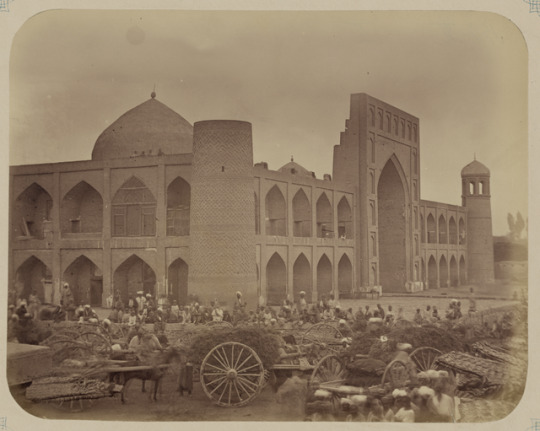
City of Kokand circa 1840-1888, thanks to Wikicommons
All three men were Jadids (modern Muslim reformers) who worked with the Bolsheviks to stabilize Central Asia, helped create the borders of the five modern Central Asian states, and were murdered by the Soviets during Stalin’s Great Purge of the 1930s. It was illegal to publish their work until the glasnost. Check out my history podcast to learn more about the Jadids and the Russian and Central Asian Civil Wars.
From a literary perspective however, Ismailov wrote the Devils’ Dance similarly to Qodiriy’s own O’tgan Kunlar and Cho’lpon’s Night (whereas Ismailov’s other books: Dead Lake and the Underground are more Soviet era Central Asian literature and his newest book the Manaschi is more post-Soviet). Like Qodiriy and Cho’lpon, Ismailov writes about MCs who are not the master of his own fate, but instead are going through the motions of a fate already written, one of his MCs is a woman unfairly caught in a misogynistic system that uses women as it sees fit (although I would argue that Hamid gives his women characters more agency than either Qodiry and Cho’lpon), and he writes about the corruption and inefficiencies of whatever government agency is in control at the time – whether it be a Russian, a Khan, or an indigenous agent of said government. All three books end in death, although only Cho’lpon’s Night and Ismailov’s the Devils’ Dance end in a farce of a trial. Even stylistically Ismailov mimics the rich and dense language of Qodiriy whereas I find Cho’lpon’s style crisper although no less rich for it.
Abdurauf Fitrat’s Downfall of Shaytan
While Ismailov led me down a historical rabbit hole which is captured on my history podcast, I also wanted to see if any of Fitrat’s, Qodiry’s, or Cho’lpon’s work had been translated into English.
So far, I can’t find anything by Fitrat except excerpts in the Devils’ Dance and Making Uzbekistan by Adeeb Khalid (one of my all-time favorite history books by one of my favorite scholars who also happens to be very kind and patience and I still can’t believe I interviewed him for my podcast).
Fitrat wrote a specific play I really want to read called Shaytonning Tangriga Isyoni which Dr. Khalid translated as Shaytan’s Revolt Against God. According to the summary provided by Dr. Khalid it is a challenging take on the Islamic version of Satan’s downfall.
According to Dr. Khalid, in Islamic cosmology God created angels from light and jinns from fire and they could only worship God. When God made Adam, He commanded all angels and jinn to bow before him. Azazel (who would become Shaytan) refused claiming he was better than Adam who was made out of clay. He was cast out of heaven and became Shaytan/Iblis.
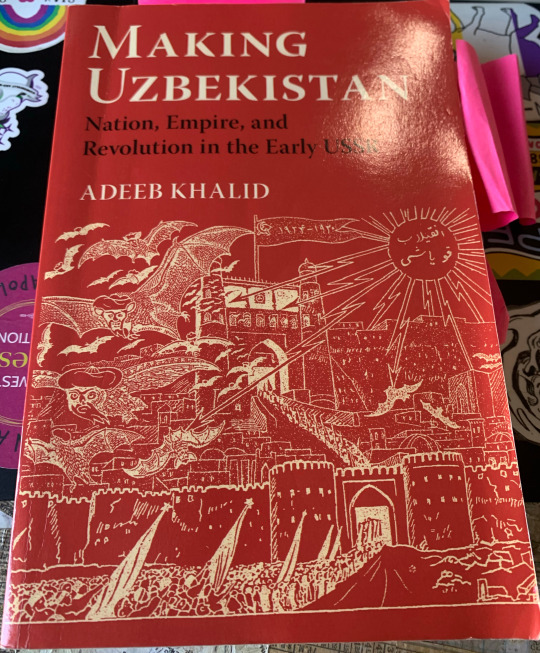
Fitrat reimagines Shaytan’s defiance as heroic. He is disgusted by the angels’ submissive nature and God’s ability to create anything and yet he chooses to create servants. Azazel has seen God’s plan to create another being out of clay and have the angels worship him as well, which Azazel sees as a betrayal on God’s part. Gabriel, Michael, and Azrael try to convince Azazel to see reason and instead he brings his grievance to the other angels who are confused. God intervenes and the angels give in, but Azazel continues to defy God. God strips him of his angelic nature, and he turns into Shaytan who warns Adam of God’s treacherous nature and vows to free him and all other creatures from God’s trickery.
Doesn’t it sound amazing?! Fitrat has outdone Milton in terms of completely overturning God’s and Satan/Shaytan’s rules (also no wonder he was marked for execution right? Complete firebrand and pain in the ass (and I mean that with love)) and I really want to read it. So, either someone needs to translate this into English, or I need to learn Persian/Uzbek, which ever happens first, haha (judging on how my Russian is going…)
Abdulla Qodiry’s O’tgan Kunlar
While I can’t find any of Fitrat’s work in English, there have been two translations of Abdulla Qodiriy’s novel and the first ever Uzbek novel O’tgan Kunlar. In English, the title translates as Days Gone By or Bygone Days. There are two translates out there: Days Gone By translated by Carol Ermakova, which is the version I’ve read, and Otgun Kunlar by Mark Reese, which I haven’t read yet but I’ve heard him speak (and actually spoke to him about his translation – thank you Oxus Society) so you can’t go wrong with either one.
O’tgan Kunlar is an epic novel set in the Kokand Khanate in the 18th century and is about Otabek and his love Kumush. There’s also a corrupt official, Hamid who hates Otabek because Otabek is a former who wants to change the society Hamid benefits from. Hamid tries to get Otabek killed for treason because of his reformist believes, but the overthrow of the corrupt leader of Tashkent (who Otabek worked for) saves Otabek’s life. However, the corrupt leader’s machinations convince the Khan to declare war against the Kipchaks people, who are massacred. Otabek and his father vehemently disagree with the massacre of the Kipchaks.
Once Otabek is released and gets revenge against Hamid, he marries Kumush without his parent’s approval and is torn between the two families. His mother hates Kumush and forces him to take a second wife, Zainab. Obviously, things go terribly wrong as Otabek doesn’t even like Zainab and Kumush doesn’t know how to feel about her husband having a second wife. Zainab hates her position within the household and eventually poisons Kumush.

Abdulla Qodiriy thanks to Wikicommons
O’tgan Kunlar is considered to be an Uzbek masterpiece that is central to understanding Uzbekistan. Not only is it a great tragic love story, but it also highlights some of the things Qodiriy was thinking about as he engaged with other Jadids. Just as Otabek argued for reforms especially in the educational, social, and familial realms, the Jadids were making the same arguments. We can also see the Jadid’s struggle with the ulama and the merchants in Otabek’s struggle with Hamid. Qodiry attempts to capture the struggle women went through by writing about the horrors for arrange marriages and polygamy, but Kumush is an idealized version of a woman. She is the pure “virgin” like Margarete from Faust while the other two female characters; Otabek’s mother and Zainab are twisted, bitter woman who hurt those they “love”. One could argue they’ve been corrupted by the society they live in, but they also lack the depth of Otabek and even his father.
One of the most interesting parts of the novel is the massacre of the Kipchaks because it is written as the horror it was and both Otabek and his father condemn the action. His father even claims that there is no sense if hating a whole race for aren’t we all human? Central Asia is a vast land full of different peoples who share common, but divergent histories and while these differences have led to massacres, there have also been moments of living peacefully together. It’s interesting that Qodiriy would pick up that thread and make it a major part of his novel because this was written during the Russian Civil Wars and the attempts to create modern states in Central Asia. The Bolsheviks really pushed the indigenous people of Central Asia to create ethnic and racial identities they could then use to better manage the region and so one wonders if Qodiriy is responding to this idea of dividing the region instead of uniting it.
Cho’lpon’s Night
While O’tgan Kunlar is a beautiful book and Qodiriy is a masterful writer, I prefer Cho’lpon’s Night (although don’t tell anyone). Night was supposed to be a duology, but Cho’lpon was murdered before he could finish the second book. Cho’lpon wrote Night in 1934, after years of being attacked as a nationalist. It was a seemingly earnest attempt to get into the Soviet’s good graces. Instead, he would be murdered along with Qodiriy and Fitrat in 1938.
Night is about Zebi, a young woman, who is forced to marry the Russian affiliated colonial official Akbarali mingboshi. The marriage is arranged by Miryoqub, Akbarali’s retainer. Akbarali already has three wives and, like in O’tgan Kunlar, adding a new wife causes lots of problems in the household. Meanwhile Miryoqub falls in love with a Russian prostitute named Maria and they plan to flee together. While they are fleeing they met a Jadid named Sharafuddin Xo’Jaev and Miryoqub becomes a Jadids. Meanwhile Akbarali’s wives conspire against Zebi and attempt to poison her but she unwittingly gives it to Akbarali instead. Zebi is arrested and found guilty of murdering her husband and sentenced to exile in Siberia. The book ends with Zebi’s father, who encouraged her marriage to Akbarali, is driven made by his daughters fate and murders a sufi master while Zebi’s mother goes mad, wandering the streets and singing about her daughter.
Like Qodiriy, Cho’lpon is interested in examining governmental corruption, the need for reform, and women’s plight, but Cho’lpon is less resolute than Qodiriy. Cho’lpon’s novel is constructed similar to poetry: an indirect attempt to capture something that is concrete only for a moment.
His characters are own irresolute or ignorant of important pieces of information meaning they are never truly in full control of their fates. Even Miryoqub’s conversion to Jadidism is to be understood as a step in his self-discovery. In Cho’lpon’s world, no one is ever truly done discovering aspects of themselves and no one will ever have true knowledge to avoid tragedy.

Cho'lpon courtesy of Wikicommons
It is interesting to read Night as Cho’lpon’s own insecurity and anxiety about his own fate and the fate of his fellow countrymen as Stalin seemingly paused persecuting those who displeased him. While Qodiriy crafted and wrote O’tgan Kunlar in the 1920s, which were unstable because of civil war, but promised something greater as the Jadids and Bolsheviks regained control over the region, Cho’lpon wrote Night during the height of Stalin’s Great Terror, most likely knowing he would be arrested and executed soon.
Both novels are beautifully written historical novels about a beautiful region, but I prefer Cho’lpon’s poetic prose and uncertainty.
Conclusion
Reading the works of Fitrat, Qodiriy, and Cho'lpon not only introduced me to a history I knew little about, but also introduced me to a whole literature I never knew existed. The books mentioned in this blog post are beautiful pieces literature and will challenge how you see the world and how much literature we miss out on when we don't read beyond authors who work in our native tongues.
The canon of Central Asian literature is immense, with only a handful of books and poems translated into English. I hope more works are translated so other people can engage with these books and poems and learn about these writers and the circumstances that shaped them. And, if you haven't, go check out Tilted Axis who are doing amazing work translating books so people can engage with them.
If you're enjoying this blog, please join my patreon or donate to my ko-fi
#central asian history#central asian literature#abdurauf fitrat#abdulla qodiriy#cho'lpon#O'tgan Kunlar#Days Gone by#Night#Hamid Ismailov#the Devils' Dance#Soviet Union#Soviet Central Asia#Uzbekistan
12 notes
·
View notes
Video
youtube
220930 EXO's Kai gives an exclusive interview
Q: As we know, this is your first visit to Uzbekistan, what are your impressions?
I am very happy that I visited this country. And as far as I know, none of the EXO members and other SM artists have ever visited Uzbekistan. Therefore, I am very glad that I had this opportunity.
Q: What are your expectations from the concert and for the first time you will see the Uzbek public/fans?
Yes, this is the first time I have performed in front of the Uzbek public, and therefore, of course, I am worried and look forward to our meeting at the concert. But I have already seen them at the airport and here at the festival. Their amazing incredible energy fills my heart. It is with this love that I will perform.
Q: On stage, you just have crazy charisma. You are open, you are brave, but in life, you are very shy and modest, how can you explain such a dissimilarity between two parallels, two persons?
Yes this is true. When I first go on stage in front of the fans, I am overwhelmed with energy, and without realizing it, I become an idol again. But let's say yesterday I was walkking down the street and accidentally met one of the fans. I think at that moment he saw me as I am in ordinary life, that is, a simple guy who walks along the street and eats.
Q: Please tell us more about your album "Peaches". It is in a new style, it is different from the old one, and tell us about the content.
"Peaches" album is a comparison of relationships between people with peaches. Love is soft and tender, but at the same time, there is a bone, that is, something solid. We reflected this metaphor in our choreography. If you watch the video for the song of the same name, you can see that I'm a little different there. It shows a new style in my music, a new side of Kai that no one has seen before.
Q: Briefly tell us what Mokkoji Korea's concert tonight will be like.
I thought a lot about what song my fans would like to hear at the concert. Since this is our first meeting, I wanted something fun and at the same time sensual. Therefore, three songs were chosen: Peaches, Mmmh, and Reason. They have different charms and differ from each other in style. So I hope I will be able to show myseld from different sides to the new public.
My dear fans from Uzbekistan! I am glad to welcome you for the first time. I expect a lot from the upcoming concert, and I hope to visit Uzbekistan again. For me, this visit will be an unforgettable experience. I will never forget this day. Thank you so much!
Translation
14 notes
·
View notes
Text
"Namangan Unveils a Symphony of Colors and Traditions: The 63rd International Flowers Festival Awaits Your Arrival!"
In the heart of Uzbekistan's Ferghana Valley, Namangan is poised to enchant the world once again with the upcoming 63rd International Flowers Festival, a celebration that transcends the ordinary, weaving together the beauty of nature and the richness of cultural heritage. Set to unfold from May to June, this year's festival promises to be an immersive experience, embracing visitors with the allure of art, nature, and cultural diversity.
The Blossoming City: Namangan's Nature and Heritage Known for its breathtaking landscapes and cultural treasures, Namangan has risen to global prominence, and the International Flowers Festival has played a pivotal role in this acclaim. An annual spectacle that has grown in stature, the festival is a harmonious blend of natural splendor and cultural traditions, beckoning visitors from around the globe to witness the unique fusion of art, nature, and culture that defines Namangan.
Floral Symphony: Nature's Canvas Unveiled Taking center stage in May and June, the festival transforms Namangan's streets and parks into vibrant canvases adorned with a kaleidoscope of colors. Carefully curated displays showcase the most exquisite and rare plant species from around the world, offering a visual feast for attendees. From delicate blooms to elusive species, every corner of the festival beckons exploration.
Artistry in Bloom: Z.M. Bobur Park's Living Masterpieces Witness the city come alive as skilled local artisans craft intricate floral arrangements at Z.M. Bobur Park and various public spaces. Employing techniques ranging from weaving to sculpting, these masterpieces not only captivate with their beauty but also narrate tales of traditional Uzbek motifs – from the national bird to iconic carpet designs.
Cultural Extravaganza: Beyond Blooms The festival extends beyond the visual splendor of flowers, inviting attendees to delve into the rich cultural tapestry of Namangan. Traditional music and dance performances, a lively parade featuring flower-adorned cars and people, a gastronomic journey through local cuisine, and hands-on workshops highlighting traditional crafts immerse visitors in the vibrant traditions of the region.
Symphony Under the Stars: The National Symphony Orchestra's Open-Air Concert As the sun sets, the festival takes a musical turn with the "under the open sky" concert program by the National Symphony Orchestra of Uzbekistan. Led by Chief Conductor Alibek Kabdurakhmanov, this open-air symphony promises to serenade the night with enchanting melodies, adding a cultural crescendo to the festivities.
Children's Wonderland: Shows and Exhibitions for the Young Minds A special treat awaits the younger audience, with various shows and exhibitions tailored for kids. From magical performances to educational exhibits, the festival ensures that every child experiences the wonder of Namangan's cultural and natural wonders.
Craftsmanship Unveiled: Exhibitions and Fashion Show Week Delve into the world of artisanal craftsmanship with handcraft exhibitions that showcase the region's traditional arts. Additionally, Fashion Show Week adds a modern flair to the festival, featuring the intersection of contemporary fashion and traditional Uzbek aesthetics.
As Namangan prepares to host the 63rd International Flowers Festival, the stage is set for a mesmerizing celebration of nature and culture. This event is not just a showcase; it's an invitation to join in the jubilation, to explore the intricate details of Namangan's natural garden, and to revel in the creativity, traditions, and unity that define this extraordinary city. The success of the festival is a testament to the dedication of organizers, participants, and volunteers, and as we eagerly anticipate this international event, we invite the world to share in the splendor of Namangan's beauty.
youtube
1 note
·
View note
Text

Soviet Uzbek Singer: Муножот Йулчиева
Album: Эй Дилбари Жононим
Year: 1982
#music#worldmusic#soviet music#album art#lp art#world music#uzbek music#folk music#central asian music#uzbek#uzbekistan
47 notes
·
View notes
Text
Went to an Uzbek restaurant with my friends last night. They had a guy seated in the corner, lazily playing along with the music on an electric guitar. They had a TV playing endless tiktoks, or the facebook equivalent I guess. A scary looking Russian man (picture bratva Tony Soprano), wearing a leather jacket with a thick fur lapel, started yelling at the waiter, and angrily re-corked the wine he'd been served and re-capped the vodka he'd brought in. He was with a younger woman, who looked so embarrassed, and an older man, who eventually talked him into finishing their meal. How stupid he looked trying to dig the cork back out of the wine bottle with a butter knife!
1 note
·
View note
Text
Almaty Adventures: Explore Central Asia with Flight-Inclusive Tours
Embark on an unforgettable adventure to Central Asia with flight-inclusive tours to Almaty. Nestled at the foothills of the majestic Trans-Ili Alatau mountains, Almaty is Kazakhstan's largest metropolis and a gateway to the region's natural wonders, cultural treasures, and vibrant history. From soaring peaks to bustling bazaars, Almaty offers travelers a diverse range of experiences that promise to captivate the senses and ignite the spirit of adventure.
Natural Splendor:
Immerse yourself in the breathtaking natural beauty of Almaty, where snow-capped peaks, lush forests, and crystal-clear lakes await. Explore the stunning landscapes of the Tien Shan mountains, home to some of the highest peaks in Central Asia, including the iconic Big Almaty Peak and Chimbulak Ski Resort. Embark on scenic hikes, enjoy thrilling skiing adventures, or simply bask in the tranquility of nature's embrace.
Cultural Heritage:
Delve into Almaty's rich cultural heritage and uncover its fascinating history through visits to historic landmarks, museums, and architectural marvels. Explore the vibrant Green Bazaar, where you can sample local delicacies, shop for traditional crafts, and immerse yourself in the lively atmosphere of this bustling market. Discover the city's diverse cultural influences, from ancient nomadic traditions to Soviet-era relics, and gain insight into Kazakhstan's unique identity.
Culinary Delights:
Indulge your taste buds in the diverse and flavorful cuisine of Almaty, influenced by a blend of Kazakh, Russian, and Uzbek flavors. Savor traditional dishes such as beshbarmak (a hearty meat and noodle dish), plov (pilaf rice), and shashlik (grilled skewered meat), washed down with refreshing beverages like kumis (fermented mare's milk) or shubat (camel milk). Experience the warmth of Kazakh hospitality as you dine with locals and partake in traditional culinary rituals.
Urban Exploration:
Discover the vibrant city life of Almaty as you wander through its bustling streets, modern skyscrapers, and leafy parks. Stroll along the tree-lined avenues of Almaty's downtown area, marvel at the futuristic architecture of the Nurly Tau business center, or relax in the shade of the Central Park of Culture and Recreation. Dive into the city's thriving arts and entertainment scene, with galleries, theaters, and music venues showcasing Kazakhstan's vibrant cultural scene.
Convenient Travel:
With flight-inclusive Tour packages to Almaty, travel planning is made easy and hassle-free. Enjoy the convenience of seamless transportation from your departure city to Almaty, allowing you to focus on exploring and enjoying your adventure to the fullest. Whether you're a solo traveler, a couple, or a family, flight-inclusive tours offer a convenient and stress-free way to experience all that Almaty has to offer.
Conclusion:
Embark on an unforgettable journey of discovery with flight-inclusive tours to Almaty. From its stunning natural landscapes to its vibrant cultural heritage and culinary delights, Almaty offers travelers a wealth of experiences that promise to inspire, enthrall, and enchant. Whether you're seeking adventure, relaxation, or cultural immersion, Almaty has something for everyone, making it the perfect destination for your next getaway.
0 notes
Text

Real Name: Dulcie Satomi Black
Other Aliases: The Army Brat, Kijo (鬼女), pseudonyms: Jeanette Deschamps, Runa Fukada (瑠奈 深田), Meiko (芽愛子) Asenova, Jocelyn Hunt
Fandom: n/a
FC: Sonoya Mizuno
Age: 28
D.O.B: 21 May
P.O.B: St. Petersburg, Florida
Current Location: Saskatoon, Saskatchewan, Canada
Nationality: North American
Languages spoken: English, Japanese, Korean, Spanish, French, Mandarin, Cantonese, Thai, Bulgarian, Uzbek, Russian
Relatives:
Vera Black (mother +), Norihiro “Levi” Mochizuki-Black (father +) (Mochizuki Norihiro) (望月規広)
Cherie Black (sister)
Ona Paloma (maternal aunt), Phoenix Black (maternal uncle)
Raleigh Paloma-Black (maternal cousin)
Lilian Black (née Ross) (maternal grandmother), Vincent Black (maternal grandfather)
Yume Mochizuki (paternal grandmother) (Mochizuki Yume) (望月夢)
Hideaki Mochizuki (paternal uncle) (Mochizuki Hideaki) (望月英昭)
Romantic/Sexual orientation: Bisexual
Significant other(s): n/a
Marital Status: Single
Affiliation: Multiple temporary employers
Alignment: Neutral
Identity: Secret
Species: Elemental
Abilities: Cryokinesis, longevity
Skills: proficient in Tanto Jutsu, Pencak silat, & Arnis, proficient in muay thai, boxing, & judo, strong swimmer, multilingual
Occupation: Army Ranger (former), Hired gun
Religion: Atheist
Gender: Female
Pronoun(s): She/Her
Height: 5’7”, 170.18cm
Eyes: dark brown
Hair: dark brown
Notable physical trait(s): various laceration scars on her arms, scar split on her bottom lip, pronounced lips, long fingers, snake tattoo on her left forearm, snake tattoo on the back of her neck
Phobia(s): n/a
Mental Disease(s): n/a
Physical Disease(s): n/a
How/When was this diagnosed? n/a
One positive trait: adventurous
One negative trait: distrusting
Miscellaneous:
Dulcie’s favorite colors are neon & cobalt blue
Dulcie listens to a variety of music
She played soccer and track & field in middle and highschool
History: The day her uncle killed her parents to quell a long burning hatred and envy was the day Dulcie discovered that revenge is a path only certain types of people can take; unfortunately for her, she fit into that category
Dulcie grew up normally, unable to keep from fighting with her mother and being thankful when her father was able to smooth things over and make both the ladies he loved dearly forget the situation, and her little sister who stole her books and nail polish and pestered her for attention; whenever she and her little sister went on a trip to spend the weekend with their grandparents, Dulcie was the first to hear one morning from her grandfather about how her parents had been killed
Her whole world was flipped over, and when she and her little sister went to live with their grandparents, Dulcie decided to take the life path her mother had, one the former originally despised because she only knew her mother to be all rules and duty; Dulcie joined the army and was happily overwhelmed by the world of information and expertise, earning her a spot in the Army Rangers, all while struggling with the fact that being in the military meant someone had a lock tightened around her body, her will, and her life
While she was able to ignore that for a while, the dirtiness and abuse of power the U.S. military consistently displayed sent Dulcie over the edge, leading her to going AWOL during a mission in Africa, and the soldier made use of her skills to become a Hired Gun to avoid regretting her decision.
0 notes
Note
just. just ummm asking but if turkuzbek were getting married what outfits would they wear i want ur input!! ^_^ no secret plan whatsoever!!! justttttt curious,;;
gonna trust you on that "no secret plan thing" hmmmmmm.....
okok so the first thing you gotta know about uzbek/turkish weddings is they are basically parties. especially in the rural areas.
uzbek women take their outfits very seriously since this is a very social scene and they want others to be talking about their drip. they have at least 10 different outfits to wear to weddings. this is why every wedding looks like a gala.
uzbek brides throughout the 2-3 day wedding processions(and the engagement ceremony) have at least 4-5 different outfit changes and all of them slay so hard.
wedding outfits: the usual white dress, tuxedo combo. the bride has a jeweled headband or tiara. here's a link to an uzbek wedding store that could give you some inspo but tbh...any wedding dress is fine as long as it's white.
engagement ceremony, bachelorette party: usually a modified version of uzbek traditional clothing, link here

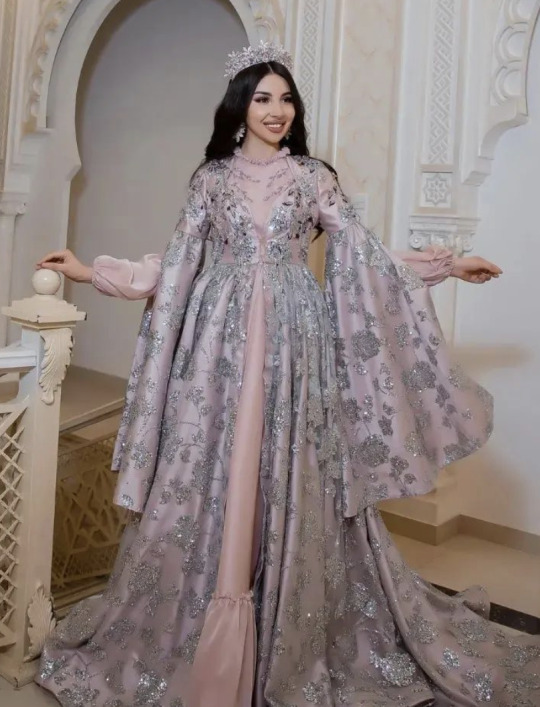
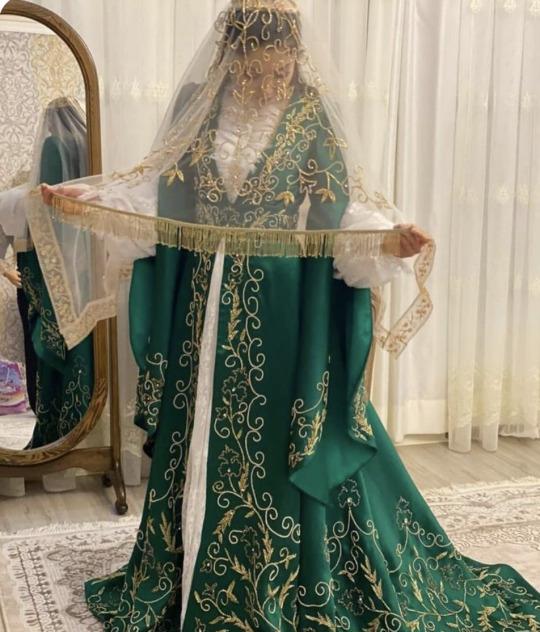
at home: here

I've looked over turkish wedding traditions and a lot of them overlap with uzbek wedding traditions: it lasts for about 2-3 days.
prequel: Fatiha-to'yi: the engagement ceremony. usually when this happens it's a sign to anyone else who was gonna propose to basically just give up lol. it's confirmed, they're officially fiances. engagement rings are given here(usually to the bride since uzbek men don't wear rings, but a lot of turkish guys do wear rings, esp wedding rings so....dazzle dazzle sadik. just as long as it's not a gold ring!). in uzbek tradition, they break bread in half, which reaffirms the officiation of the engagement.
day 1: qiz to'yi(or qiz vechir)/kına gecesi: day 1 is basically the bachelorette party, and it's about the bride and her close family and friends. in uzbekistan, it can be hosted in the bride's house or a venue/restaurant could be rented out. gifts are given to the bride's family.in turkey, the bride and wedding guests will have henna applied onto them in fun designs, and traditionally this was believed to protect the couple from evil.
day 2: nikokh toy'i: day 2 is when the bride and groom officially get married. in the very early morning, uzbek fried rice(osh/pilaf) is prepared in the groom's house for neighbors and guests to eat. around the daytime is when the groom arrives at the bride's house, and they're married by an imam(leader of your local mosque).
in turkey, there's a tradition where the groom tries to take the bride away from her home, with her family members "refusing to open the door" as a joke. the groom has to knock many times, and sometimes has to bribe the family with money or candy to let her go.
(i can see uzb's siblings being very, very adamant to let her go lol. my man turkey has to bribe them with a few benjamins to finally see her)
and after that the two are driven to the state registry office to fill out their marriage certificate. after that, they're driven to the groom's house(or a venue wherever the wedding reception is happening) to party. if it's the groom's house a whole ensemble of people playing karnays and surnays(horns) greet them at the entrance of the house. in turkey they play davuls(drums) and zurnas(horns).
usually about 300 people on average pull up to the reception. sometimes guests aren't even close to the bride/groom themselves, they'll just hear from a friend of a friend that a wedding's happening on X date and they're down. anyway, lots of music and dancing going around, and a lot of food. in turkey, they have a traditional dance called haley, where people hold hands and dance in a circle, as the music speeds up and slows down(a bit like dabke...??)
examples of venues lol

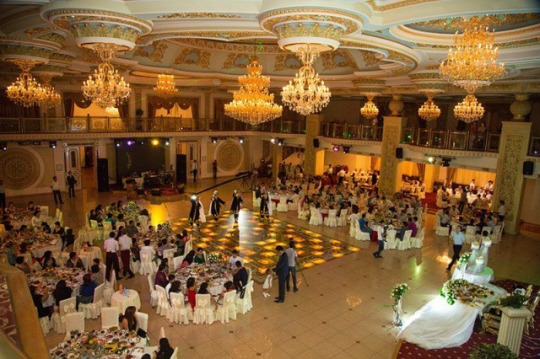
this goes on until like. quite late into the night(1-2am). there's all sorts of traditions, like the groom eating a bit of honey and then giving it to the bride to eat as well so their life is "sweet" from then on, but there's a lot of regional differences i can't list lol. in turkey, the bride and groom give pocket money in envelopes to kids.
when the bride and groom is at home, the bride's friend dresses the bride up in special clothes behind a curtain in the bride and groom's room. the groom, along with his friends, has to go and pay a small sum of "ransom money" to her friend, after which they're left alone together.
day 3: kelin salom(bride greeting): on the third day, the bride is dresses in kelin sarpo with a veil over her head, as she bows lightly to guests. during this time, both sides of the family exchange gifts of things to help the new couple's household. with that, all ceremonies are over. the bride wears a bunch of new drip her parents collected and bought over the years for the next month or so.
i couldn't add much about turkey since I'm not turkish, so if anyone turkish would like to correct me on something or add on, feel free!
#hetalia#tokki answers#its come to that point fellas...FINALLY#turkuzbek did it. the ship sailed#aph uzbekistan#hws uzbekistan#aph turkey#hws turkey#turkuzbek#sadik adnan#omg this took me like 3hrs to write....#but adri omg. thank you SO MUCH for asking abt them...they mean SO MUCH TO ME !!!
7 notes
·
View notes
Text


Swynrpwrimo Task #6 - Daylist
Disassociating New Wave Post-Punk Friday Evening featuring new wave, post-punk, and darkwave
[tracker]
or what I call the most autistic music to ever autistic, these are all on MY stimtastic dancing playlist
Very fitting bc even tho I tried not to make all of my characters autistic...Marlin absolutely has got the undiagnosed 'tism
He often listens to new wave and post-punk music before work, it's great music to zone out to, because you'll find yourself doing your little dancey dace to it while cutting fruit for the bar without really having to think. The repetitive sounds in the music ground you but it's not so repetitive it's annoying or boring. The electronic sounds in these genres are cool to him but not overwhelming like a lot of music with electronic elements.
This is peak stimming music and he doesn't even know that's what it is lmao.
A lot of this music is probably THE most off-the-wall stuff he listens to, except maybe They Might Be Giants most weird stuff. Like, probably not even Nemo has heard him talk about or listen to some of these songs. Nemo probably grew up listening to some Talking Heads and Depeche Mode because of Marlin off of this playlist!
Tracklist:
Pull Up The Roots - Talking Heads
Blue Monday - New Order
Deep Water - Strawberry Switchblade*
Isolation - Joy Division
Örlögin - Kælan Mikla**
Grey Matter - Oingo Boingo
Durdu Dünya - She Past Away***
Смерти Больше Нет (Death No More) - IC3PEAK****
Personal Jesus - Depeche Mode
Судно - Molchat Doma
This Must Be The Place - Talking Heads
No One Lives Forever - Oingo Boingo*****
Ritüel - She Past Away
Song 3: The meanest thing So-yeon ever did was make him listen to Strawberry Switchblade because they only have ONE ALBUM from the 80's and that's it. PEAK dark wave goodness, truly very mean of So-yeon to show it to him when there's not more content
Song 5: Swynrp canon that the members of this witchy Icelandic dark wave group are all either sorcerers or fairies. Just look at them they're so witchy and faeriecore. He's absolutely not shown anybody this band though lol
Song 7: This is a Turkish post-punk revival duo! Mads also likes them a lot. Mu-yeol might have talked about this duo to people. "Eh, I don't speak Turkish but I love post-punk."
Song 8: The way this man suddenly becomes fluent in Russian when this song comes on shuffle despite only remembering the swear words his Uzbek migrant worker coworker taught him in 2002 South Korea lol. So this is really probably THE most off-the-wall music he listens to regularly. IC3SPEAK is a Russian electronic and experimental hiphop duo whose music sometimes ends up in dark wave playlists, that's how he found them. Their music is often political, criticizing the Russian government, and if there's one thing Mr. Bae loves it's music with a political statement lmao. But if you give him the aux cord and this comes up, he'll hit next because he doesn't want you to look at him and go "What IS this shit?" because he, like me, will be so embarrassed he'll never accidentally mention music he likes in front of you again, let alone play a song for you :):):)
Song 12: This song has done almost as much for him as therapy and mood stabilizers lol
0 notes
Text
Study MBBS in Uzbekistan For Indian Students: Your Path to a Globally Recognized Medical Degree

Studying MBBS in Uzbekistan For Indian Students has emerged as the finest option. The Best Medical Universities in Uzbekistan provide an affordable 6-year MBBS program in English Medium. The educational standard is on par with that of industrialized nations like the USA, UK, Canada, etc. After receiving their MBBS from Uzbekistan, medical students are qualified to apply for a medical licensing examination to get a certificate allowing them to practice anywhere in the globe.
Students who study MBBS in Uzbekistan not only receive a top-notch medical education but also have the opportunity to travel to a stunning nation with a promising medical future. Aspiring doctors should strongly consider it since it blends academic achievement with cultural development.
Cost of Study for MBBS in Uzbekistan 2023-24
The cost of study for MBBS in Uzbekistan is highly affordable. The education cost for most medical universities in Uzbekistan is approximately between 20-25 lakh for the whole course.
Advantages of Studying MBBS in Uzbekistan for Indian Students
• Students have the opportunity to work while studying MBBS in Uzbekistan, with various part-time job options available to help cover their expenses.
• There are several housing options to choose from, including affordable single-housing facilities.
• English serves as the medium of instruction at all universities. This is why there is a growing influx of Indian students coming to Uzbekistan to pursue their MBBS degrees.
• The quality of education provided by medical universities is exceptional and stands up well against other premium countries. These colleges and universities boast accomplished and highly experienced staff and teachers.
• Traveling to Uzbekistan is convenient, thanks to the availability of numerous non-stop flights from India to Uzbekistan.
Required Document of MBBS in Uzbekistan
• Mark sheets and certificates for your Class 10th and Class 12th examinations.
• Migration certificate, admit card, and self-attested copies of required documents for MBBS Admission In Uzbekistan.
• A valid passport and a student visa specifically for studying MBBS in Uzbekistan.
• Ensure that your passport is valid for a minimum of five years from the date of issue, as stamped by the Ministry of External Affairs.
Admission Procedure of MBBS in Uzbekistan
1. Choose one of Uzbekistan's highly ranked universities for your MBBS program.
2. Complete a detailed online application form by visiting the university's official website.
3. Pay the necessary fees once you receive the approval letter from the university.
4. Apply for a student visa to study and reside in Uzbekistan.
5. After receiving your visa from Uzbek authorities, make arrangements for your flight tickets.
6. Ensure that you have all the required documents ready for your study abroad in Uzbekistan.
Best Medical University of Uzbekistan
• Tashkent Medical Academy, Termez Branch
• Samarkand State Medical Institute
• Bukhara Tashkent State Medical Institute
• Tashkent Pediatric Medical Institute
• Fergana Medical Institute of Public Health
Eligibility Criteria for MBBS in Uzbekistan
• Clear the NEET examination.
• Complete your 10+2 education through a regular board.
• 60% marks in physics, chemistry, biology.
• Students should know English (IELTS not required).
About Uzbekistan
In Central Asia, Uzbekistan is a landlocked nation renowned for its vibrant culture and extensive history. The capital and largest city is Tashkent. The nation played a significant role in the historic Silk Road, which promoted East-West trade and cultural interchange. Uzbekistan is home to architectural marvels like Samarkand's Registan Square, which features beautiful Islamic design. The nation is also known for its beautiful ceramics, authentic music, and delectable cuisine, which features items like pilaf and kebabs. After gaining independence from the Soviet Union in 1991, Uzbekistan underwent political and economic reforms. With its historical attractions and welcoming people, it is a country with a promising future.
For more info call us:☎️ +919818560331, +919342914452
0 notes